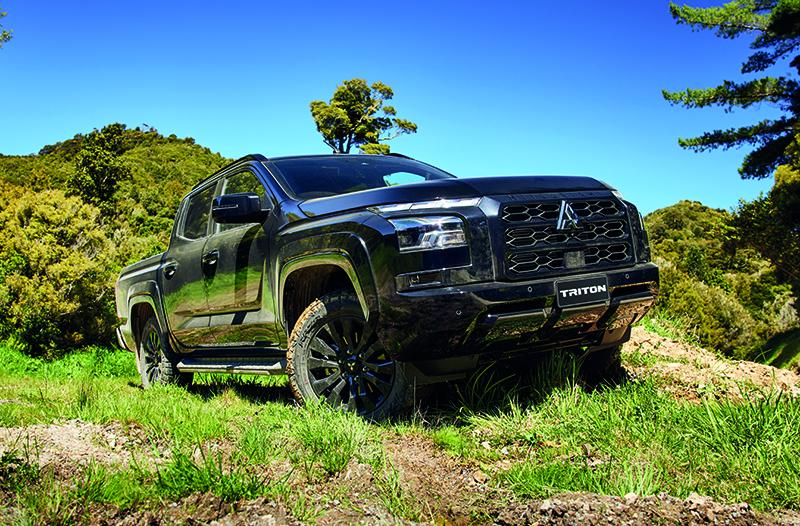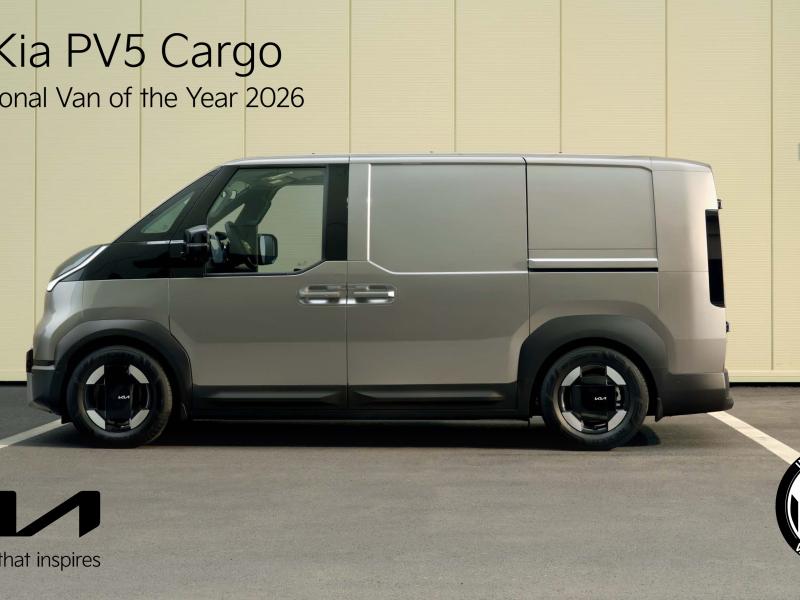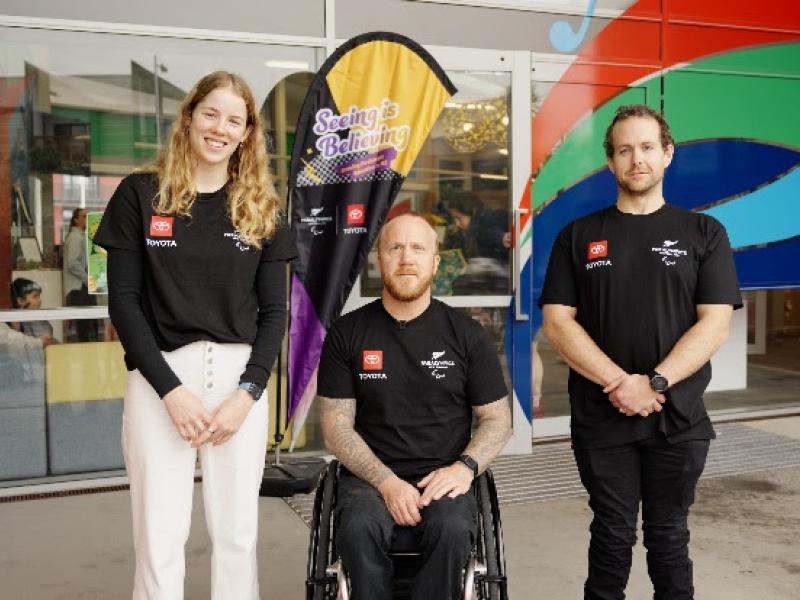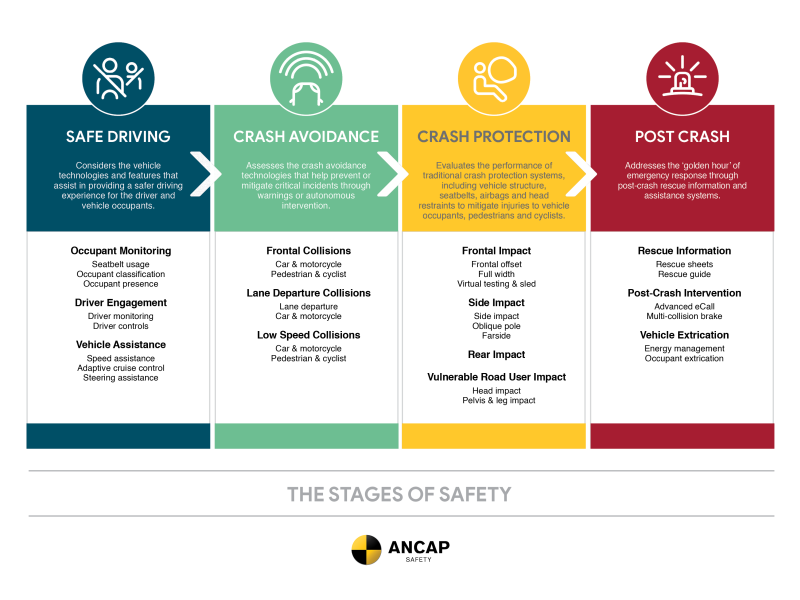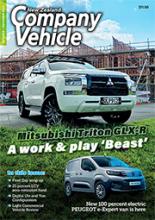This is the first time pre-sold orders for a Mitsubishi have broken the 1,200-unit mark.
Without the benefit of a formal launch because Mitsubishi NZ was not ready for that at the time of writing – here’s what we know about the new Mitsubishi Triton for 2024:
The range is as extensive as we remember, with seven 2WD models and nine 4WD models ranging from GLX grade through GLXR and topping out at the VRX specification level.
The next-generation Triton’s exterior has been completely updated with a strong focus on geometric design, showcased by family-familiar front grilles, specific to each model grade.
A black, honeycomb-style grille defines the GLX models, while a gloss-finished black honeycomb-style grille identifies a GLX. VRX adopts a body-coloured grille surround.
The next-generation Triton headlights have been completely revamped to improve visibility and presence on the road. GLX models have halogen lights. GLXR and VRX take LEDs.
The rear of the cabin and tray have been squared off to add to the presence of the next-generation Triton and make it stand out on the road.
Cab chassis models get a basic taillight design (similar to previous Triton cab chassis) and all well-side models feature an LED high-mounted stop light in the tailgate.
The LED T-shaped taillights are positioned on the very edge of the rear and highlight the vehicle’s wide stance.
The overall length and width have increased compared to the previous Triton. With the wheelbase increased by 130mm, the ute’s rear overhang has also dramatically reduced, resulting in enhanced proportions, improved stability, and better towing performance.
All cab types can fit a Euro-style pallet (1200mm x 800mm) in the tray with bedliner fitted.
The cargo bed floor height has been lowered, so it’s easier to load and the rear bumper corner shape has more space to place a foot with the tailgate open.
Inside, the cabin has been widened and the seat shape/materials have been designed to help drivers and passengers enjoy long journeys with minimal stress and fatigue.
All touch points have been redesigned, creating a completely new interior experience and with the occupants at front of mind.
In simple summation, the next-generation Triton is bigger with a tougher design, more roominess, and more cargo space.
As far as body styles go, Triton comes in single cab chassis, Club cab chassis and well side, along with the double cab chassis and well side variants.
All models, regardless of body style or specification level run an optimised six-speed automatic transmission, which has seen some fettling.
It has been adapted to accommodate the increased torque output and at the same time, it has seen a weight reduction, contributing to improved fuel efficiency, as does the engine.
This is a new Euro 6B-compliant engine built by Mitsubishi – coded the 4N16. It is a 2.4-litre, four-cylinder, bi-turbo with 150kW and 470Nm on tap.
In addition to a range of optimised engine component features of a technical nature, and by adopting bi-turbocharging technology, the engine delivers improved power and torque.
According to Mitsubishi, the 4N16 develops torque from lower in the rev range, which significantly reduces take-off lag, allowing for confident and powerful acceleration when entering highways and intersections.
The low friction engine is equipped with engine stop/start and AdBlue – an after-exhaust additive and part of a selective catalytic reduction system – to achieve Euro6B compliance.
The next-generation Triton’s 17L AdBlue tank is designed to last between services – with an average consumption rate of 1.0L/1000km, considering road conditions: the way the vehicle is being driven, whether it is towing consistently and so forth.
Mitsubishi says the 4N16 engine has seen significantly reduced CO2 and fuel consumption from the preceding model, despite the next-generation Triton being heavier and with greater power and torque outputs.
Final fuel economy and CO2 figures had yet to be advised at the time of writing.
All next-generation Tritons have a 3,500kg tow rating with at least 1000kg payload across the range. Each ute has a gross combination weight of 6000kg – 6210kg in the case of the 2WDs and 6250kg for the 4WDs.
Mitsubishi says the next-generation Triton is one of the most, if not the, most capable load-carrying pickups in the segment.
The next-generation Triton is also a very safe Triton, with a host of new safety features allowing the ute range to target an ANCAP safety rating measured at 2024 levels.
Advanced safety features for Triton include auto post-collision braking, forward collision itigation with junction assist, rear automatic emergency braking, driver monitoring system and attention alert, front cross-traffic alert, adaptive cruise control, traffic sign recognition, lane departure prevention and emergency lane assist.
In addition to these new features, the next-generation Triton inherited other standout driving technologies from the previous Triton.
Oh, and the next generation VRX model adopts a tyre pressure monitoring system with a low-pressure warning and a recommended pressure for all tyres.
In addition to a reversing camera with active guidelines and front and rear parking sensors, Cab chassis models feature all the advanced safety features barring the rear automatic emergency braking system.
The rear AEB system utilises a unique camera on well-side models with strict calibration and precise fitment requirements and because this makes it difficult to remove the tray and refit the camera to say, a service body/flat-deck, Mitsubishi has introduced cab chassis variants to all models, making the Triton the ute of choice for customisation without compromise.
On the plus side, well-side models feature a multi-around view monitor with moving object detection and manual differential lock is standard on all models.
For the 4WD models – the Super Select II four-mode 4WD is standard, as are seven Drive modes – Normal/ECO/Gravel/Snow/Mud/Sand/Rock – activated by the Drive Mode selector and active yaw control which helps turn the vehicle safely and as the driver intended – even on slippery roads such as gravel and snow.
The next-generation Triton’s chassis frame is completely new and is the backbone of all its performance, while the ute’s larger size delivers better stability and handling. Meantime, the higher rigidity delivers a better ride while reducing noise, vibration, and harshness.
Suspension systems of the 2WD and 4WD next-generation Tritons have been redesigned.
The front suspension has a longer rebound stroke for superior handling and comfort on all road types, while the rear demonstrates greater strength for less weight – the standard suspension now uses three leaf layers (as opposed to the previous five). Heavy-duty suspension is now with four layers (from six).
Commentators are predicting this year to be the year for Mitsubishi’s workhorse and based on what you’ve just read, we’ll let you make up your mind – but 1,200 pre-sales is a very compelling reason to investigate the Mitsubishi Triton further.


